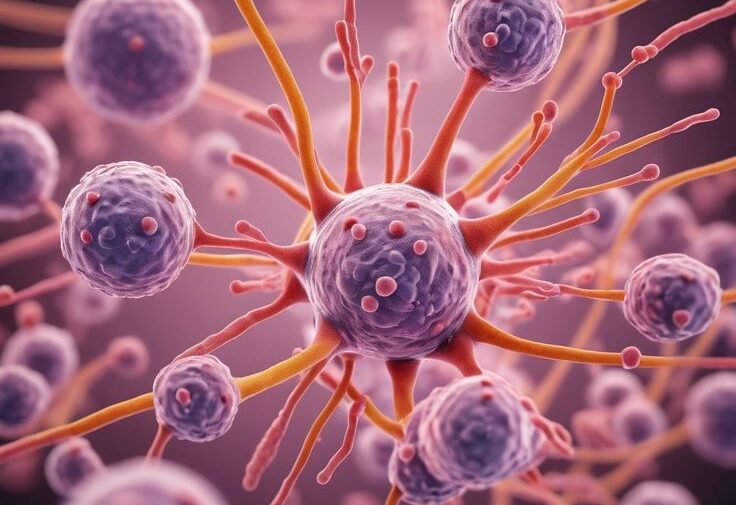Parasitic Chyluria is a rare manifestation of lymphatic filariasis, caused predominantly by the filarial nematode Wuchereria bancrofti. It occurs due to lymphatic obstruction and subsequent leakage of chyle—a milky lymphatic fluid rich in emulsified fats, proteins, and lymphocytes—into the urinary tract. This condition leads to the hallmark symptom of milky white urine and is a significant cause of morbidity in endemic regions of the world.
Epidemiology of Parasitic Chyluria
- Global Distribution: Parasitic chyluria is primarily found in tropical and subtropical regions of the world where lymphatic filariasis is endemic. The disease is highly prevalent in parts of India, Southeast Asia, Africa, South America, and the Pacific Islands.
- Causative Parasite: The most common causative organism is Wuchereria bancrofti, responsible for over 90% of lymphatic filariasis cases. Less commonly, species such as Brugia malayi and Brugia timori can also be involved.
- Transmission: The parasite is transmitted through mosquito bites, particularly by Culex, Anopheles, and Aedes mosquitoes.
Lymphatic filariasis affects approximately 120 million people globally, with a subset of these individuals progressing to chronic complications like chyluria.
Etiology and Pathophysiology of Parasitic Chyluria
- Life Cycle of the Parasite:
- Infective larvae (L3 stage) enter the human body through a mosquito bite and migrate to the lymphatic system, where they mature into adult worms.
- Adult worms (macrofilariae) live for years in the lymphatic vessels and can obstruct lymphatic flow, leading to inflammation, dilation, and damage.
- The worms produce microfilariae, which circulate in the peripheral blood and are taken up by mosquitoes, completing the life cycle.
- Lymphatic Obstruction and Leakage:
- The presence of adult worms causes lymphatic inflammation (lymphangitis) and lymphatic vessel dilation (lymphangiectasia).
- Over time, lymphatic vessel walls weaken, and abnormal fistulous connections form between the lymphatic system and the urinary tract (renal pelvis, ureters, or bladder).
- These connections allow chyle, a mixture of lymph and fat absorbed from the intestines, to leak into the urinary tract, resulting in milky white urine.
- Physiological Effects of Chyluria:
- Loss of proteins, fats, and essential nutrients through the urine leads to malnutrition, weight loss, and hypoalbuminemia.
- Prolonged leakage of chyle can also result in immunosuppression due to lymphocyte depletion.
- Secondary complications include urinary tract obstruction from chylous clots and renal damage.
Clinical Features of Parasitic Chyluria
Parasitic chyluria may present with a range of clinical manifestations depending on the severity and duration of the condition.
- Urinary Symptoms:
- Milky white urine: The hallmark and most noticeable symptom. The degree of turbidity varies with the chyle content.
- Intermittent chyluria: Chyle leakage can occur intermittently, often aggravated by heavy meals rich in long-chain fatty acids.
- Hematochyluria: A combination of blood and chyle in the urine may occur, giving the urine a pink or reddish hue.
- Clot formation: Chylous and blood clots can obstruct the urinary tract, leading to symptoms such as:
- Dysuria (painful urination)
- Urinary retention
- Flank pain
- Systemic Symptoms:
- Weight loss and malnutrition: Due to significant protein and fat loss in the urine.
- Edema: Swelling of the limbs, genitalia, or other body parts due to chronic lymphatic obstruction (lymphedema).
- Hypoalbuminemia: Loss of serum albumin leads to generalized swelling and weakness.
- Recurrent urinary tract infections (UTIs): Prolonged chyluria predisposes patients to bacterial infections.
Diagnosis
The diagnosis of parasitic chyluria involves a combination of clinical evaluation, laboratory tests, and imaging studies:
- Clinical History and Examination:
- Residence or travel to endemic regions.
- History of milky white urine, recurrent UTIs, or weight loss.
- Laboratory Investigations:
- Urinalysis:
- Presence of chylomicrons (fat globules), lipids, and lymphocytes.
- Sudan III staining can confirm the presence of fat in the urine.
- Microscopic Examination: Detection of microfilariae in peripheral blood (especially at night, when they circulate in high numbers).
- Biochemical Analysis: Elevated triglyceride content in urine confirms the chylous nature.
- Serological Tests: Antifilarial antibody detection or antigen-based assays (e.g., ICT card test).
- Urinalysis:
- Imaging Studies:
- Ultrasonography: Useful for detecting lymphatic dilation and identifying structural abnormalities.
- Lymphangiography: A specialized imaging test to visualize lymphatic vessels and leaks.
- CT scan or MRI: For evaluating lymphatic obstruction and detecting lymphatic-urinary fistulas.
- Cystoscopy: Endoscopic visualization of the bladder and ureters to confirm the site of chyle leakage.
Management
- Medical Management:
- Antifilarial Therapy:
- Diethylcarbamazine (DEC) is the drug of choice for treating lymphatic filariasis. It helps kill the adult worms and microfilariae, thereby reducing lymphatic obstruction.
- Dietary Modifications:
- A low-fat, high-protein diet is recommended.
- Substitution of long-chain triglycerides with medium-chain triglycerides (MCTs) helps reduce chyle production, as MCTs are absorbed directly into the portal circulation.
- Conservative Interventions:
- Adequate hydration and symptomatic treatment for pain or urinary obstruction.
- Antibiotics may be given to manage secondary urinary infections.
- Sclerotherapy:
- Instillation of a sclerosing agent (e.g., silver nitrate or povidone-iodine) into the renal pelvis under cystoscopic guidance helps obliterate lymphatic leaks.
- This procedure is minimally invasive and has a high success rate for persistent chyluria.
- Surgical Management:
For severe or refractory cases, surgical interventions include:
- Lymphatic-venous anastomosis: Surgical rerouting of lymphatic flow into the venous system.
- Renal pedicle lymphatic disconnection: Separation of abnormal lymphatics from the renal system.
- Nephrectomy: Reserved for extreme cases where kidney function is severely compromised.
Prognosis
With appropriate medical or interventional treatment, the prognosis of parasitic chyluria is generally favorable. However, untreated chronic chyluria can lead to significant malnutrition, immunosuppression, and renal complications, impacting the quality of life.
Conclusion
Parasitic chyluria, though uncommon, represents a chronic and distressing complication of lymphatic filariasis in endemic areas. Understanding its pathophysiology, early diagnosis, and timely intervention are critical to preventing long-term complications. With advances in diagnostic techniques and treatment modalities, effective management of parasitic chyluria is achievable, improving patient outcomes.



